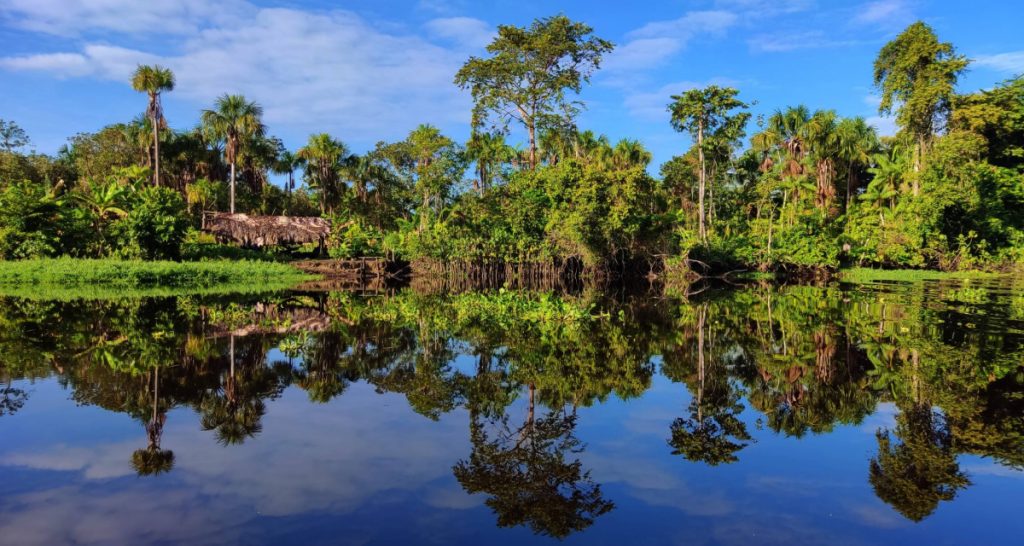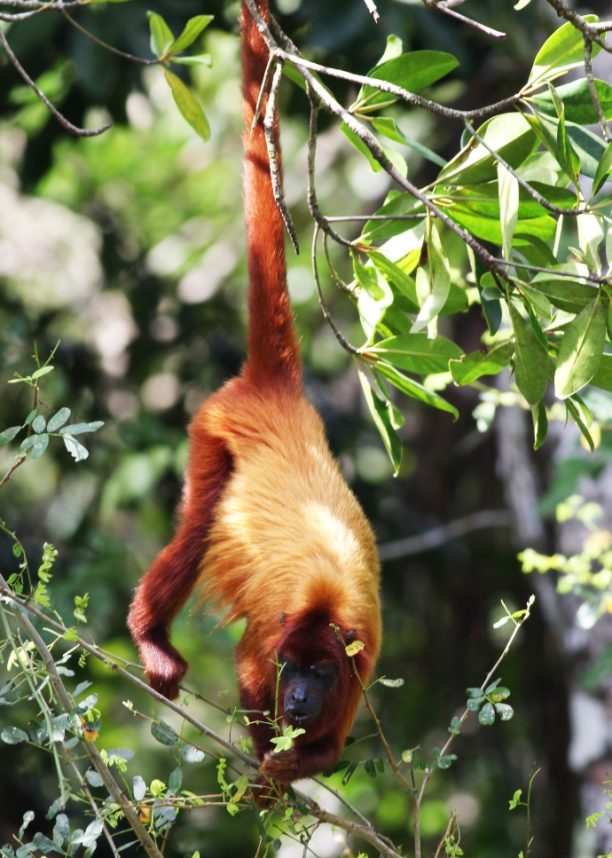
The Orinoco Delta is a vast river delta of the Orinoco River, located in eastern Venezuela. Coordinates – 02°19′05″N 63°21′42″W / 2.31806°N 63.36167°W.
The Orinoco Delta is one of the nine geographical regions into which Venezuela is divided. It is located in the whole extension of Delta Amacuro State and a few kilometres of Monagas State, comprising the totality of the mouths of the Orinoco
Its drainage basin, sometimes called the Orinoquia, covers 880,000 square kilometres (340,000 sq. mi), with 76.3% in Venezuela and the remainder in Colombia.
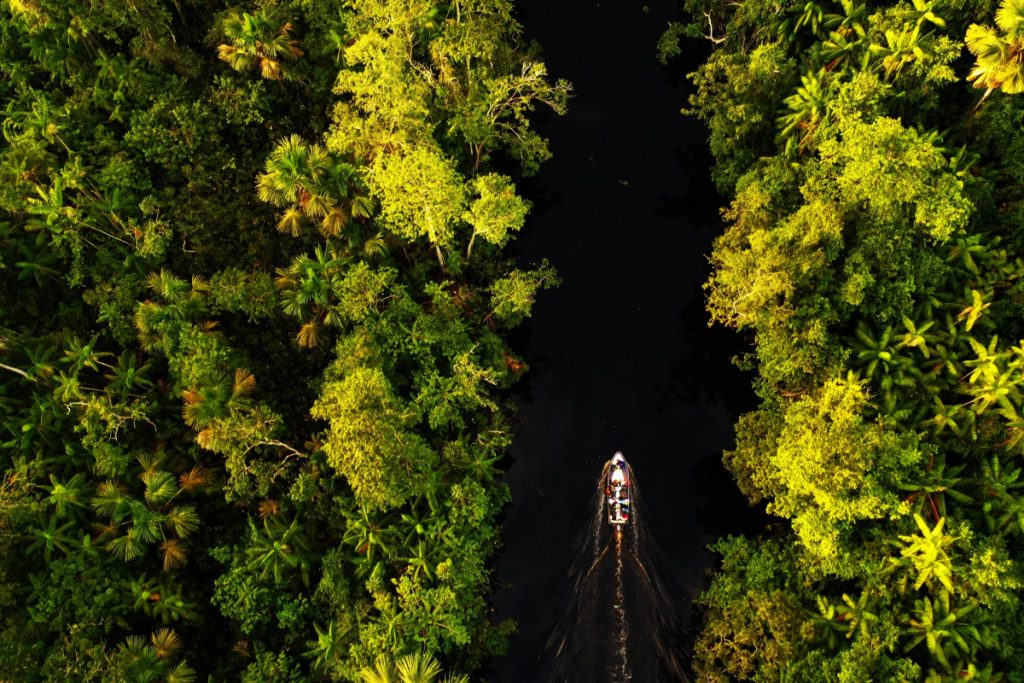
The Orinoco is one of the longest rivers in South America at 2,140 km (1,330 mi).
Tucupita.
Puerto Ordaz, Ciudad Bolívar, Maturín.
331,000 hectares of the lower delta has been protected under the Mariusa National Park since 1991.

The delta is divided into upper and lower regions, west and east of the Caño Macareo respectively. This division is a consequence of the flood control program initiated in the 1960s; Caño Mánamo was dammed, reducing seasonal flooding in the north and making the land more suitable for cattle farming. There was, however, a cascade of knock-on effects in the region. The reduced water levels in the upper delta caused the region to become tidal and water levels now rise and fall by 1-2m daily. In the dry season, salt water now moves further up the waterways, which has had a significant effect on the flora and fauna of the area and has forced resident Warao to relocate, seeking fresh water upriver. The lower delta, still under the influence of the Orinoco, is subject to flooding during the dry season, when water levels may vary by up to 15m
The Orinoco Delta is fan-shaped, formed by the Orinoco River as it splits into numerous distributaries, called caños, which meander through the delta on their way to the sea. The main distributary is called the Rio Grande, which empties south-southeast through the southern portion of the delta, and the second major distributary is Caño Mánamo, which runs northward along the western edge of the delta.
The delta includes large areas of permanent wetlands as well as seasonally-flooded freshwater swamp forests. The river margins of the delta are fringed with mangroves. Also, daily tides bring upstream – the “caños” – sea water which is responsible for the “macareo” or “pororoca” and also for inversion of flow direction of water, at least, on its surface.
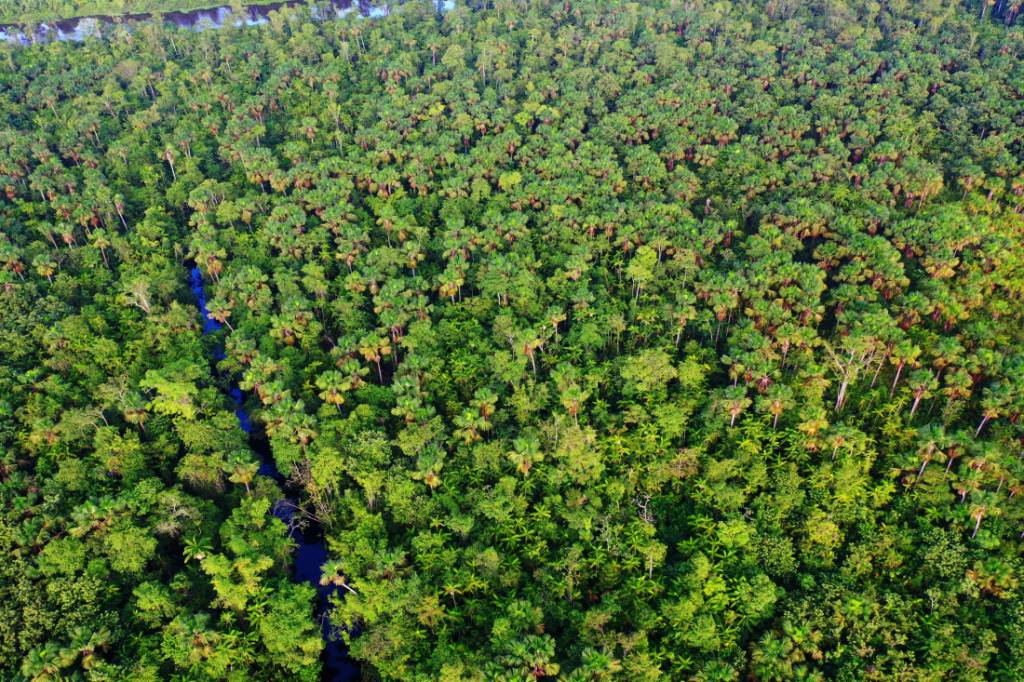
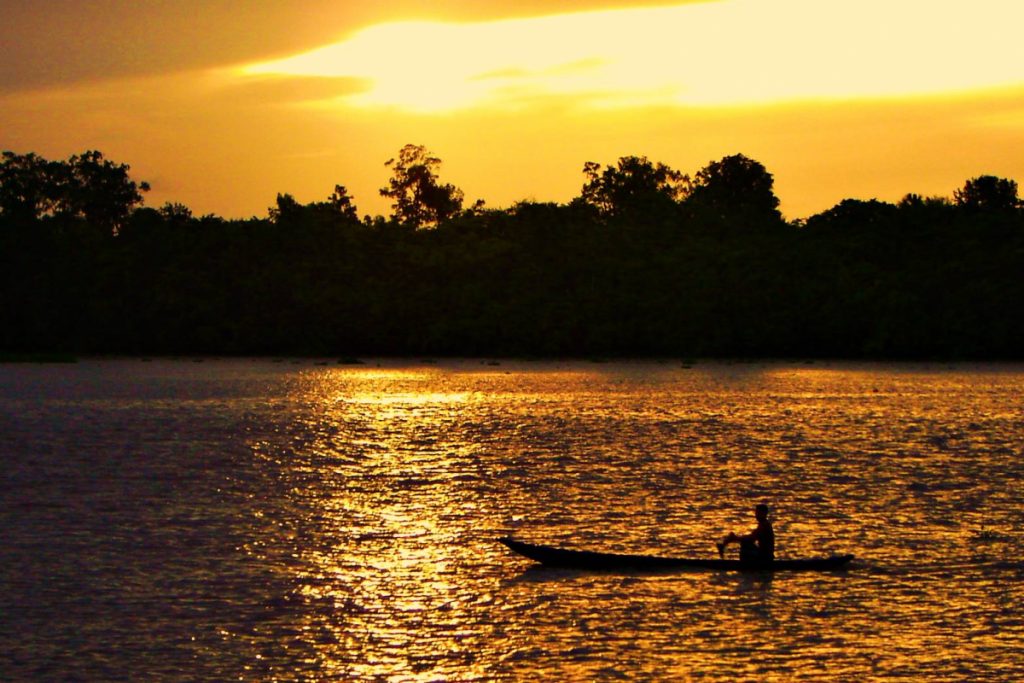
The Orinoco Delta is characterized by being non-centric, lagoon lacking, and oceanic, somewhat similar to the delta of the Niger River. It is divided into two sections: the principal, at the northernmost part of the system, located between Caño Mánamo and the left shore of Caño Araguao, where the majority of villages are established, including the state capital, Tucupita; and the secondary, between the right shore of Caño Araguao and Río Grande.
Over the last century alone, some 1,000km² has been added to the delta, which continues to extend into the Atlantic at a rate of 40m per year over its entire 360km coastline. The Orinoco branches off into over 60 caños (waterways) and 40 rivers which diffuse through 41,000km² of forested islands, swamps and lagoons.
The Warao – an indigenous people that live in the northeastern region of Venezuela and the western region of Guyana. The term Warao translates as “the boat people,” after the Warao’s lifelong and intimate connection to the water. Most of the approximately 24,000 Warao inhabit Venezuela’s Orinoco Delta region, with smaller numbers in neighbouring Guyana and Suriname. They speak an agglutinative language, also called Warao.
The Warao constitute the second largest indigenous tribe in the country. Family groups reside in palafitos (wooden houses raised on stilts) along the banks of the river, and spend most of their daily lives in canoes fishing the nearby caños and hunting and gathering in the surrounding forests. Skilled craftspeople, the Warao build their palafitos and canoes from forest wood using traditional techniques, and, owing to increased contact with tourists, have also begun to carve figurines from balsa wood and to make necklaces, baskets and hammocks from the leaves and seeds of the ubiquitous moriche palm. The moriche palm, however, supplies more than just the basis for artisenal crafts. Otherwise known as the ‘tree of life’, the moriche provides the Indians with fruit, juices and a sweet pulp that can be made into a type of bread. Moreover, the trunk of the palm is used to cultivate a thumb-sized beetle grub, the moriche worm, a nutritious dietary supplement.
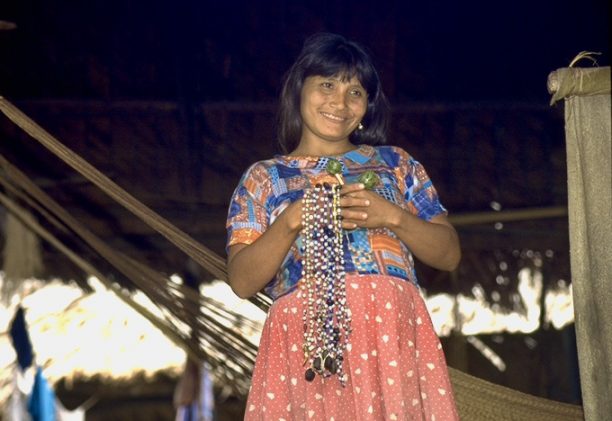
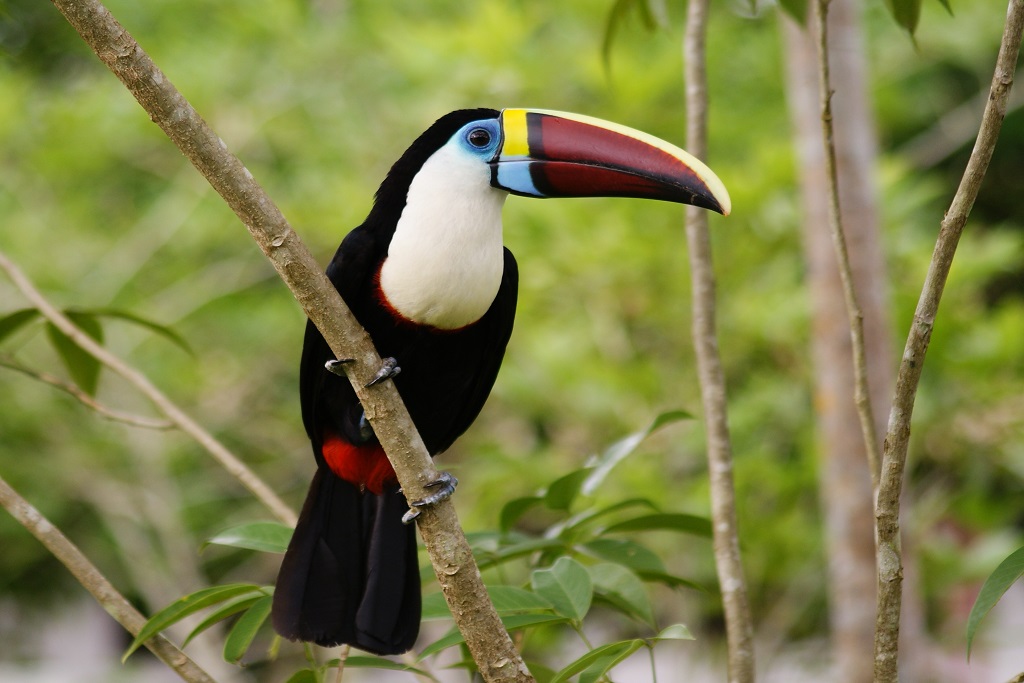
A massive variety of habitats exist within the delta, both terrestrial and aquatic. Mixed tropical rainforest, dominated by towering palm trees, prevails over much of the terra firma, fostering a variety of flora including fruiting trees, orchids, bromeliads and arboreal ferns; the latter of which flourish in the moist air of the canopy. Grassland swamps and marshes brim with aquatic plants, and estuarine waterways towards the ocean are thick with mangroves. Throughout the delta, the caños are themselves hugely diverse in form. Wide channels break off into narrow rivulets, isolated pools and lagoons. Some, heavy with sediments that are brown in colour, others are black with tannic acids. Many are carpeted with vast floating meadows of water hyacinths (bora) and grasses, slowly drifting along with the current.
Needless to say, the wildlife of the delta is also extremely rich and varied. Jaguar, puma, ocelot, red howler and capuchin monkeys, capybara, agouti, giant otter, manatee and river dolphins are just a handful of the countless species of mammal that can be observed in their natural habitats. Among the extensive bird population are hoatzin, macaws, parrots, toucans, caciques, kingfishers, cormorants, egrets, king vultures, falcons, hawks, harpy-eagles, weaverbirds and hummingbirds. There is also an untold number of amphibians, reptiles and fish species, including anaconda, boas, vipers, fer-de-lance, coral snakes, iguana, caiman, Orinoco crocodiles, snapping turtles, piranha, stingrays and catfish.
The tropical sun slaps the waters of the Orinoco River as you lazily drift in a canoe under a lush canopy of rainforest. Suddenly, the jungle explodes with sounds as a howler monkey’s screech scares hundreds of colourful birds into flight. You grab for your binoculars while your travel companion focuses their camera.
Flying into the sky are macaws, toucans, pelicans, parrots, kingfishers and dozens of exotic species that you have never seen before. The sounds of squawking and screeching and flapping wings then subside.
The jungle quiets down once again beneath the steamy noontime sun. As you drift in your canoe, you see a bottle-nosed river dolphin jump out the water. Visit a local Warao community and buy some of their trinkets, hand woven baskets and even hammocks then explore the jungle with a Warao guide. Maybe fish for piranhas along the way.
This is why you left your home to visit Venezuela. This is what you always wanted to do: take a river cruise through a jungle.
Welcome to your incredible bird watching and animal viewing “river cruise” vacation from Angel-Eco Tours.
